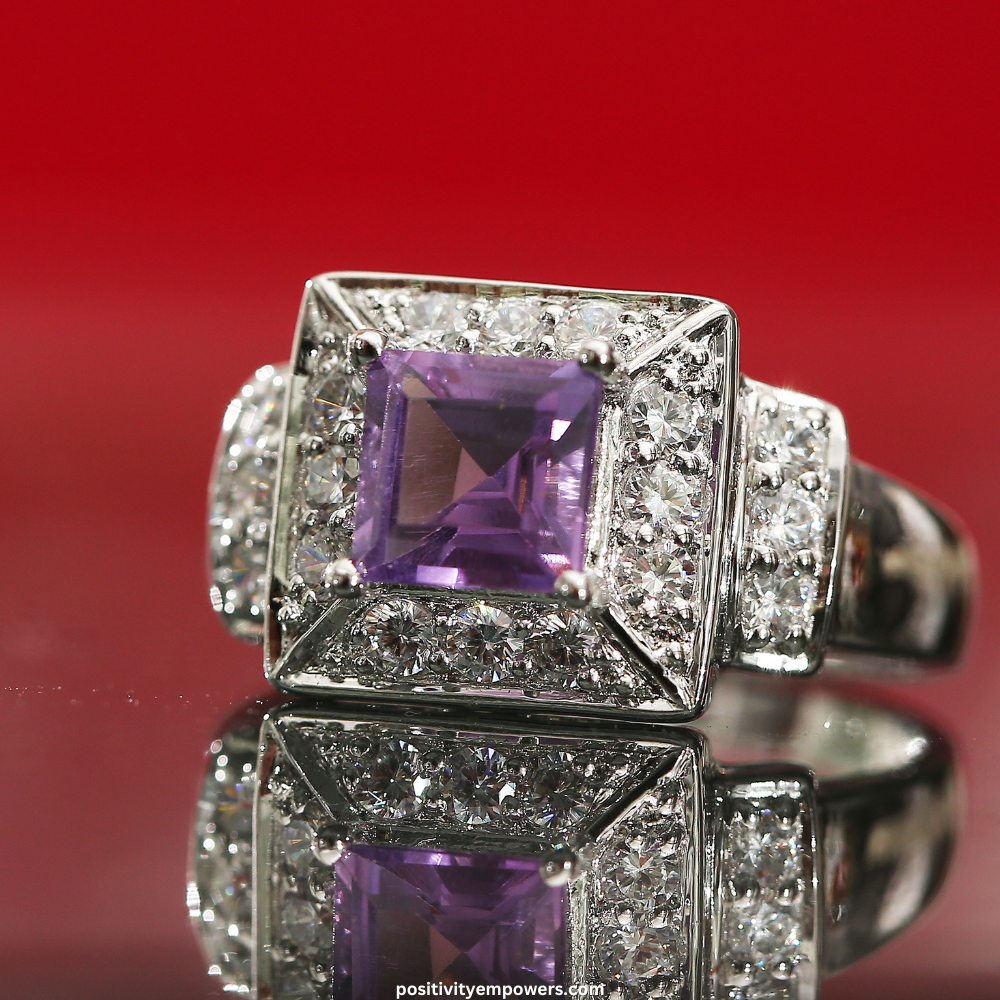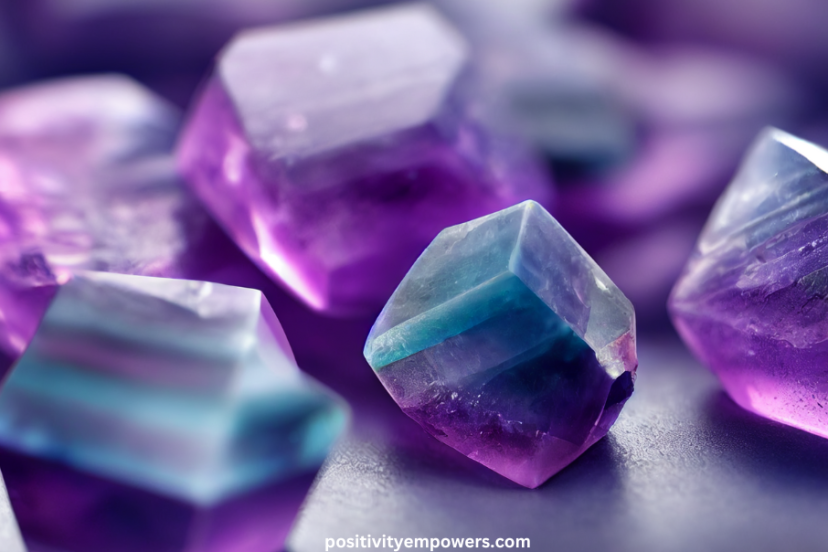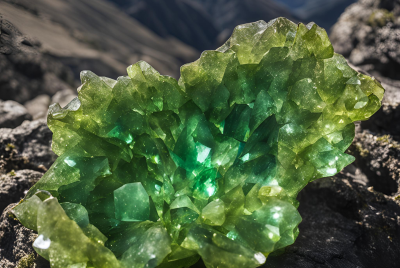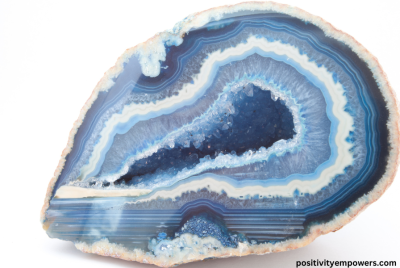Purple Gemstones – Types, Benefits, Cost & Buying Guide
Sharing is caring!
Purple gemstones are mesmerizing treasures that symbolize luxury, mystery, and spirituality. From the soft lavender hues to the deep royal violets, these stones exude a beauty that’s hard to ignore. But it’s not just about looks—purple gemstones carry unique histories, meanings, and benefits, making them perfect for jewelry lovers and spiritual seekers alike. Let’s dive into their world and discover their magic.
10 Types of Purple Gemstones
1. Tanzanite Crystals: The Exotic Gemstone
Tanzanite’s mesmerizing blue-violet shades are a rare gift from the foothills of Mount Kilimanjaro. Its exclusivity—found in only one location on Earth—makes it a coveted piece for collectors. Tanzanite symbolizes transformation and is perfect for unique statement jewelry.
2. Alexandrite: The Color-Changing Wonder
Alexandrite’s ability to shift colors—purple in sunlight and red under incandescent light—is nothing short of magical. This chameleon-like quality is not just a visual delight but also a representation of adaptability and balance, ideal for those who love rare, meaningful gems.
3. Purple Sapphire: A Rare Treasure
With its intense hues and remarkable durability, purple sapphire is a top choice for high-end pieces like engagement rings. As a member of the corundum family, it shares its lineage with rubies and other sapphires, exuding timeless luxury.
4. Purple Spinel: The Underrated Beauty
Spinel offers vivid purple shades and a fiery brilliance that rivals more famous gemstones. Its affordable charm makes it a perfect choice for those seeking beauty without breaking the bank. Plus, its durability ensures it withstands daily wear.
5. Iolite: The Viking’s Compass
Iolite’s ethereal blue-violet hues tell tales of ancient navigation. Once used by Vikings to locate the sun on cloudy days, it’s now celebrated for its historical intrigue and affordability. This gem inspires intuition and adventure.
6. Purple Fluorite: The Playful Multicolor Gem
Fluorite’s whimsical variety of colors, including enchanting purples, makes it a playful yet powerful crystal. Believed to clear mental fog, it’s ideal for students, creatives, or anyone seeking clarity and focus.
7. Purple Diamonds: The Ultimate Luxury
Purple diamonds are the epitome of opulence. Ranging from soft lavender to deep plum, these rare stones command admiration and astronomical prices. Owning one is a statement of exclusivity and timeless sophistication.
8. Sugilite: The Stone of Dreams
Sugilite’s vibrant purple tones, often mixed with magenta or lavender, make it a spiritual beacon. Known for its associations with love and emotional healing, it’s a favorite among those seeking inner peace and balance.
9. Amethyst Crystal: The Beloved Purple Quartz
Amethyst’s stunning violet tones make it a staple in gemstone collections worldwide. Its affordability doesn’t compromise its charm, as it’s renowned for promoting tranquility and spiritual growth. Often found in geodes or clusters, amethyst crystal is a favorite for both décor and daily wear.
10. Charoite: The Unique Swirling Gemstone
Charoite’s captivating swirl patterns in purple, white, and black make it a standout choice. Found only in Siberia, it’s associated with transformation and grounding.
The Powerful Benefits of Purple Gemstones
Purple gemstones have long been revered for their stunning beauty and deep spiritual significance. From enhancing intuition to promoting emotional balance and even supporting physical well-being, these gemstones offer a holistic approach to wellness. Below, we explore the many benefits of purple gemstones in detail.
1. Spiritual Benefits
Purple gemstones are strongly connected to the crown chakra, the energy center linked to spirituality, higher consciousness, and enlightenment. This connection makes them powerful tools for spiritual growth and awakening.
- Deepens Meditation – Their calming energy helps quiet the mind, making it easier to enter a deep meditative state.
- Enhances Intuition – Purple stones like amethyst are believed to heighten psychic abilities and strengthen one’s inner wisdom.
- Fosters Divine Connection – Many believe these gemstones create a bridge between the physical and spiritual realms, helping individuals feel more connected to the universe.
- Encourages Personal Growth – They promote self-awareness and transformation, allowing individuals to let go of limiting beliefs and embrace their true potential.
2. Mental & Emotional Healing
Beyond their spiritual properties, purple gemstones are also highly valued for their ability to bring emotional balance, mental clarity, and stress relief.
- Reduces Stress & Anxiety – The soothing energy of purple gemstones helps calm an overactive mind and alleviate feelings of tension.
- Boosts Mental Clarity – These stones can enhance focus, improve concentration, and promote clear decision-making.
- Encourages Emotional Stability – Whether you’re struggling with mood swings, sadness, or emotional blockages, purple gemstones help restore inner peace.
- Promotes Self-Love & Confidence – They inspire self-acceptance and a stronger sense of self-worth, allowing you to move forward with confidence.
3. Physical Wellness Benefits
Purple gemstones are often associated with physical healing, as they help restore balance to the body and support overall well-being.
- Improves Sleep Quality – Amethyst, for example, is known as a natural sleep aid, helping to combat insomnia and promote deep, restful sleep.
- Aids in Detoxification – These gemstones are believed to support the body’s natural detoxification processes, flushing out toxins and improving overall health.
- Supports the Nervous System – Their calming properties help regulate the nervous system, reducing symptoms of stress-related ailments.
- Enhances Circulation & Oxygen Flow – Some believe that wearing purple gemstones can help improve blood circulation, ensuring that oxygen and nutrients are delivered more effectively throughout the body.
Formation of Purple Gemstones
How Do Purple Gemstones Get Their Color?
The captivating purple hues of a purple gemstone are caused by trace elements like iron, vanadium, and manganese. Factors like heat, pressure, and geological conditions further shape its vibrant colors.
Where Are Purple Gemstones Found?
Purple gemstones are found worldwide. Amethyst is abundant in Brazil and Uruguay, while rarer gems like tanzanite and charoite come from specific regions like Tanzania and Siberia. The rarer Purple diamond is found in Canada, Russia and Australia.
Cost of Purple Gemstones

Factors Affecting the Price
The rarity, quality, and size of a gemstone heavily influence its price. Treatments and certifications also play a role in determining value.
Price Range of Popular Purple Gemstones
- Amethyst: $10–$100 depending on quality.
- Tanzanite: $300–$1,000 per carat.
- Alexandrite: $1,500–$15,000 per carat due to its rarity.
- Purple Sapphire: $800–$4,000 per carat.
- Purple Spinel: $200–$600 per carat.
- Purple Diamonds: $25,000–$50,000 per carat or more for natural stones.
- Sugilite: $30–$200 per carat based on size and quality.
- Charoite: $50–$150 for polished stones or cabochons.
- Fluorite: Generally affordable, fluorite costs $2 to $50 per carat
- Iolite: Iolite typically costs $5 to $150 per carat, with premium stones at the higher end.
How to Choose the Right Purple Gemstone
When selecting a purple gemstone, consider its hue, cut, and type to match your personal aesthetic and purpose.
Set a budget that aligns with your goals. Rarer stones like purple diamonds and alexandrite may require a larger investment, while amethyst offers affordability.
Where to Buy Purple Gemstones
Trusted Online Retailers
Many online platforms offer a wide selection of certified gemstones with detailed descriptions and secure shipping.
Local Jewelers
Local jewelers can provide hands-on expertise, allowing you to see and feel the gemstones before making a purchase.
Gem Shows and Expos
These events are great for exploring unique and rare pieces while connecting with industry experts who can offer guidance and assurance on quality.
How Do I Know If My Purple Gemstone Is Authentic?
Ensuring that your purple gemstone is genuine is crucial, especially if you’re investing in high-quality pieces for spiritual, emotional, or physical benefits. Here are some key ways to verify authenticity:
1. Certification from Reputable Gemological Institutes
One of the most reliable ways to confirm a gemstone’s authenticity is through certification from trusted gemological organizations such as:
- GIA (Gemological Institute of America) – A globally recognized authority that provides detailed gemstone reports, including origin, cut, and clarity.
- IGI (International Gemological Institute) – Another well-respected institute that evaluates and certifies gemstones based on strict grading standards.
- AGS (American Gem Society) – Provides expert certification and gemstone grading to ensure quality and authenticity.
Before purchasing a purple gemstone, ask the seller for a certification report from one of these institutes. This document verifies the gemstone’s authenticity, origin, and any treatments it may have undergone.
2. Check the Color and Clarity
Authentic purple gemstones, such as amethyst or lepidolite, exhibit rich, natural hues and a certain degree of transparency or inclusions. Here’s what to look for:
- Amethyst – Should have a deep violet to lavender color, with uniform saturation and natural inclusions that indicate authenticity.
- Lepidolite – Features a shimmering, lilac-purple appearance with a slightly grainy texture due to its mica content.
- Charoite – Has a striking mix of deep purples and swirls of white or black, creating a one-of-a-kind pattern.
If the gemstone appears too perfect, overly vibrant, or lacks inclusions under magnification, it could be lab-created or dyed glass rather than a natural stone.
3. Conduct a Hardness Test
Each gemstone has a specific Mohs hardness rating, which determines its resistance to scratching. For example:
- Amethyst – Has a hardness of 7, meaning it should be able to scratch glass but not be scratched by softer materials.
- Lepidolite – Has a hardness of 2.5–4, making it much softer and more fragile.
- Charoite – Ranges between 5–6, meaning it’s durable but not as hard as amethyst.
If a supposed amethyst can be scratched easily by a coin or fingernail, it’s likely fake or another mineral misrepresented as amethyst.
4. Look for Natural Inclusions and Imperfections
Genuine gemstones often have natural inclusions or slight imperfections visible under magnification. Some examples include:
- Tiny fractures or color zoning in amethyst.
- Natural mica flakes in lepidolite that reflect light.
- Swirling fibrous textures in charoite.
If the gemstone appears flawless and too smooth, it may be synthetic or artificially enhanced.
5. UV Light & Heat Tests
- Amethyst fluoresces faintly under UV light—if the stone doesn’t react at all, it might be fake.
- Heat Test – Natural amethyst retains color under heat, while fake versions (like dyed quartz or glass) may fade when exposed to high temperatures.
6. Buy from Reputable Sellers
To avoid fakes, always purchase from trusted jewelers, gemstone dealers, or certified online retailers. Reputable sellers will provide certificates of authenticity and allow you to inspect the stone before buying.
Ensuring that your purple gemstone is genuine is essential, whether you’re purchasing it for spiritual benefits, healing properties, or investment purposes. Always look for certifications, color consistency, inclusions, and hardness, and buy from reliable sources to ensure you’re getting a truly authentic stone.
Final Thoughts
Purple gemstones are steeped in history and spiritual significance. Cultures across the world have cherished them as symbols of power, wisdom, and spiritual awakening. Whether you’re drawn to their vivid beauty, their deep symbolism, or their exclusivity, purple gemstones hold a charm that goes beyond the material. They’re more than accessories—they’re works of art imbued with centuries of admiration and timeless energy.




